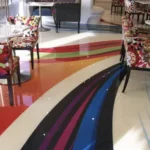When it comes to selecting flooring for your home, the options can feel overwhelming. With so many types of flooring available, how do you decide which one is best for your space? The right flooring should match your desired aesthetic, meet your durability needs, and fit your budget.
Let’s dive into the top 10 types of flooring and discover how to choose the right one for your home!
1. Hardwood Flooring
Best for: Entire home, except for wet environments
Hardwood flooring has been a timeless choice for homes. It’s known for its durability and classic beauty. With various species like oak, cherry, and maple, each type offers unique grain patterns and colors.
- Cost: $3 to $12 per square foot
Pros:
- Beautiful Appearance: Natural wood adds warmth and elegance.
- Durable: Can last for generations with proper care.
- Refinishing Option: Can be sanded and refinished multiple times.
Cons:
- Sensitive to Moisture: Not suitable for bathrooms or basements.
- Higher Cost: More expensive than many other flooring options.
- Scratches Easily: Can be prone to scratches from pets and heavy furniture.
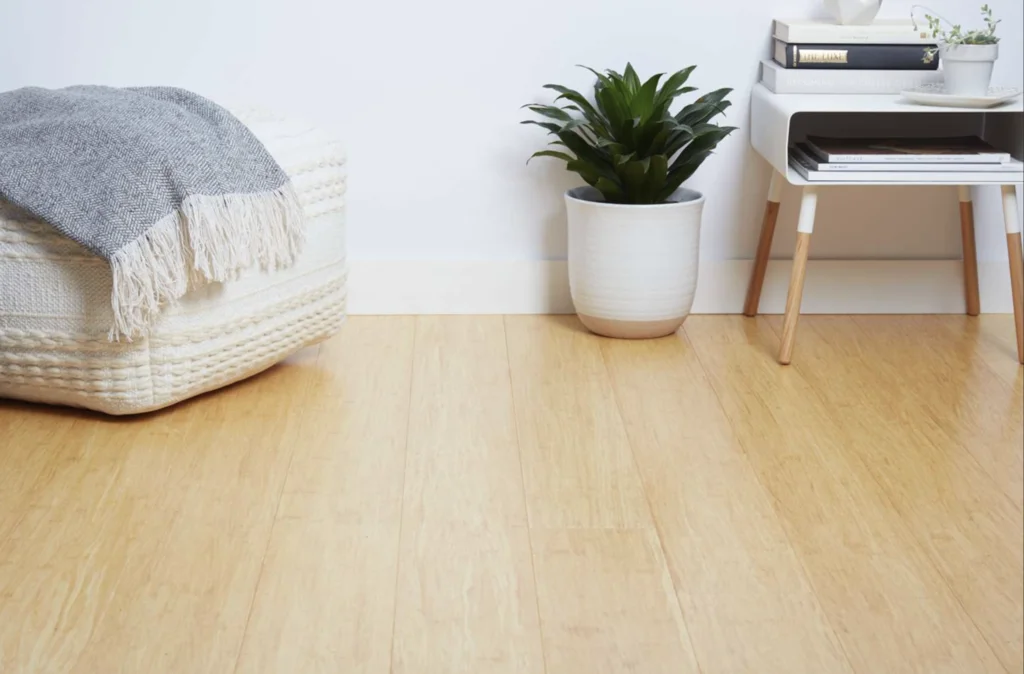
2. Laminate Flooring
Best for: Bathrooms, kitchens, basements, whole home
Laminate flooring provides the look of hardwood at a fraction of the cost. It mimics wood, stone, or tile and is available in a variety of styles.
- Cost: $1 to $3 per square foot; installation costs range from $2 to $8 per square foot.
Pros:
- Affordable: Great for budget-conscious homeowners.
- Durable: Resistant to scratches and fading.
- Variety of Styles: Wide range of designs to choose from.
Cons:
- Sensitive to Moisture: Can warp if exposed to water.
- No Refinishing: Once worn, it must be replaced.
- May Delaminate: Can separate at the seams if not properly installed.
3. Vinyl Flooring
Best for: Bathrooms, kitchens, basements, whole home
Vinyl flooring is a favorite for families due to its durability and low maintenance. It’s available in sheets, tiles, or planks, and can resemble wood or stone.
- Cost: $1.50 to $3.83 per square foot.
Pros:
- Water-Resistant: Ideal for moisture-prone areas.
- Affordable: Generally cheaper than many other options.
- DIY-Friendly Installation: Easy to install for those who want to tackle it themselves.
Cons:
- Cannot Be Refinished: Limited lifespan compared to hardwood.
- Environmental Concerns: Not considered eco-friendly.
- Requires a Perfect Subfloor: Needs a smooth surface for installation.
4. Tile Flooring
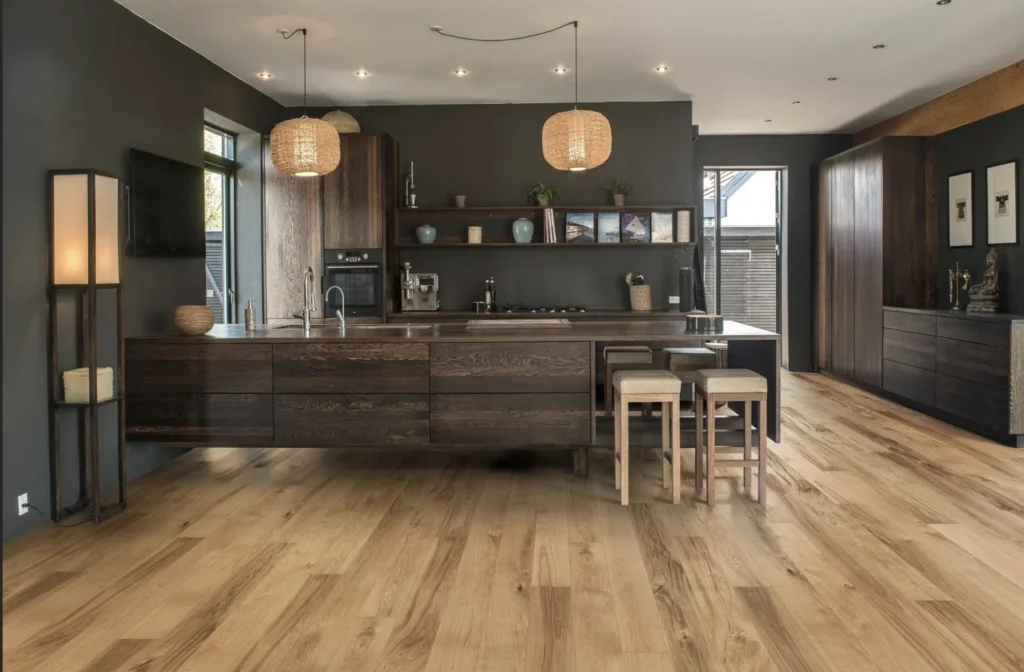
Best for: Kitchens, bathrooms, commercial use, laundry rooms
Tile flooring is celebrated for its durability and variety. Available in ceramic, porcelain, and stone, tiles come in numerous styles, colors, and sizes.
- Cost: Average installation cost is around $2,880 per project.
Pros:
- Highly Durable: Resistant to scratches and moisture.
- Low Maintenance: Easy to clean and maintain.
- Variety of Designs: Endless options for customization.
Cons:
- Difficult DIY Installation: Requires expertise for best results.
- Hard Surface: Can be uncomfortable to stand on for long periods.
- Cold Underfoot: Not ideal for colder climates without heating.
5. Bamboo Flooring
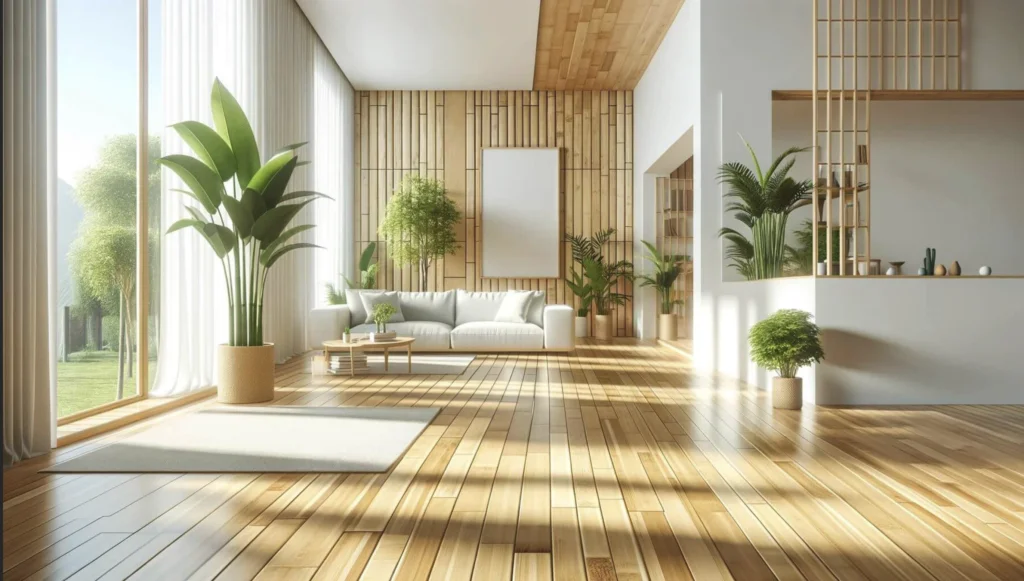
Best for: High-traffic areas, whole home, commercial use
Bamboo flooring is a sustainable alternative to hardwood. It’s durable and has a unique aesthetic appeal.
Pros:
- Eco-Friendly: Rapidly renewable resource.
- Low Maintenance: Simple to clean and maintain.
- Durable: Comparable to hardwood in strength.
Cons:
- Scratches Easily: Can show wear over time.
- Sensitive to Moisture: Needs care in humid environments.
- Potentially Toxic: Some adhesives may release VOCs.
6. Carpet
Best for: Bedrooms, hallways, playrooms
Carpet is a cozy choice that remains popular for its comfort and sound-absorbing qualities.
- Cost: Installation ranges from $780 to $2,800, averaging about $1,800.
Pros:
- Comfortable: Soft underfoot, great for lounging.
- Sound Dampening: Helps reduce noise between rooms.
- Affordable Options Available: Budget-friendly choices exist.
Cons:
- Allergen Magnet: Can trap dust and allergens.
- Difficult to Clean: Stains can be hard to remove.
- Not Ideal for High Traffic: May wear out faster in busy areas.
7. Stone Flooring
Best for: High-traffic areas, kitchens, bathrooms, outdoors
Stone flooring offers a luxurious feel and a natural aesthetic. Options like marble, slate, and granite elevate any space.
Pros:
- Durable: Long-lasting and resilient.
- Natural Look: Unique variations in color and pattern.
- Good for Outdoor Use: Perfect for patios and walkways.
Cons:
- High Cost: Can be expensive to purchase and install.
- Cold Surface: May require heating in colder climates.
- Some Types Stain: Needs sealing to protect against stains.
8. Concrete Flooring
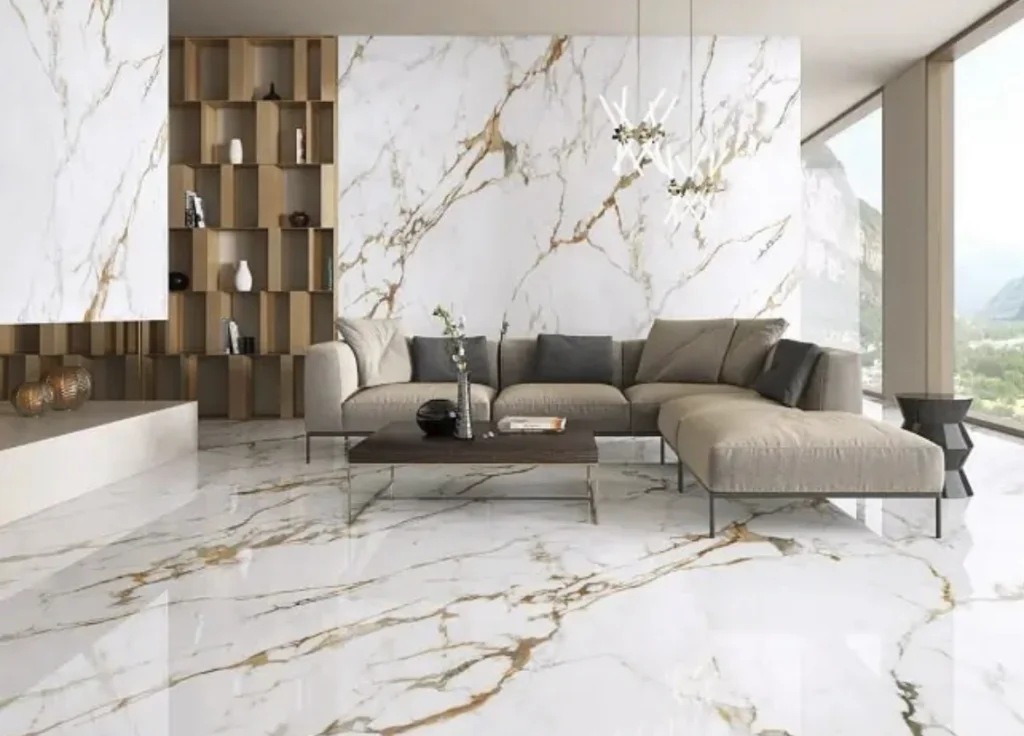
Best for: High-traffic areas, whole home, commercial use
Concrete is incredibly durable and requires minimal maintenance. It’s gaining popularity for its modern industrial look.
Pros:
- Low Maintenance: Easy to clean and resistant to spills.
- Affordable: Generally less expensive than other flooring types.
- Highly Durable: Can withstand heavy foot traffic.
Cons:
- Cold and Hard: Can be uncomfortable without rugs or mats.
- Requires Sealing: Unsealed concrete can stain easily.
- Limited Aesthetic Appeal: May not suit all interior designs.
9. Cork Flooring
Best for: Bathrooms, kitchens
Cork flooring provides a soft and warm surface that’s also eco-friendly. It’s made from the bark of cork oak trees, making it sustainable.
Pros:
- Pest Resistant: Naturally repels pests.
- Comfortable Underfoot: Soft and cushiony.
- Dampens Sound: Excellent sound absorption qualities.
Cons:
- Fading Over Time: Can lose color in direct sunlight.
- Requires Sealing: Needs to be sealed to protect against moisture.
- Less Durable: Can wear down in high-traffic areas.
10. Linoleum Flooring
Best for: Bathrooms, kitchens
Linoleum is often confused with vinyl but is made from natural materials, making it a more eco-friendly option.
Pros:
- Durable: Lasts a long time with proper care.
- Variety of Styles: Available in numerous colors and patterns.
- Eco-Friendly: Made from natural materials.
Cons:
- Prone to Dents: Can be easily damaged by heavy furniture.
- Yellowing Over Time: Lighter colors may discolor.
- Water Damage: Vulnerable to moisture without proper sealing.
Choosing the Right Flooring Type
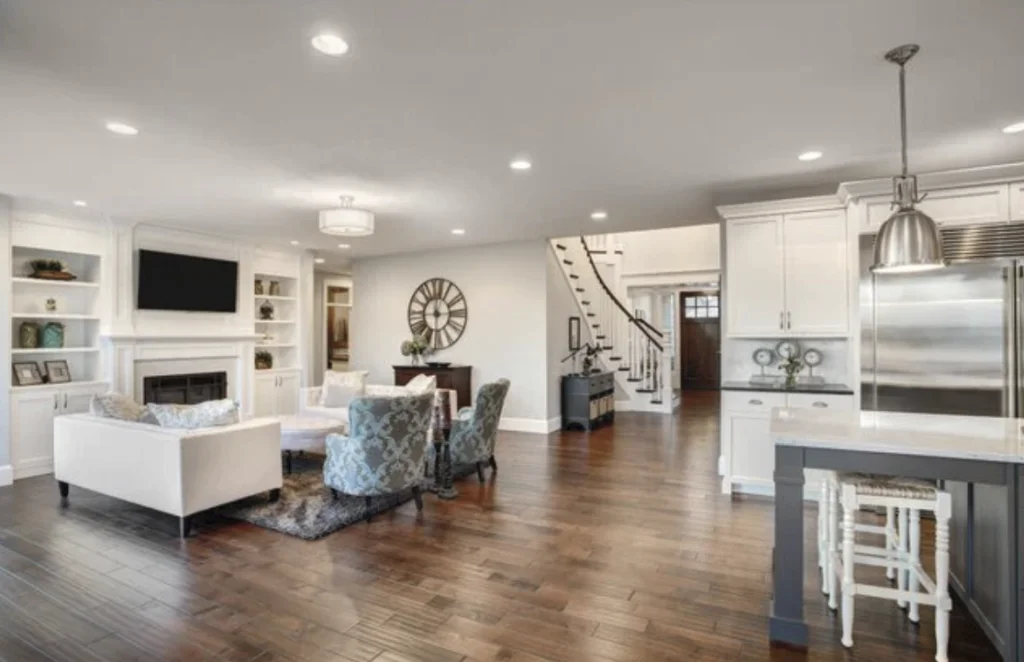
Now that you have a better understanding of the different types of flooring, how do you decide which one is right for your home? Here are some tips:
- Identify Your Budget: Understand how much you can spend on both materials and installation.
- Assess Your Needs: Consider factors like foot traffic, moisture levels, and your household’s lifestyle (pets, kids, etc.).
- Think About Aesthetics: What style do you want to achieve? Match the flooring to your home’s decor and your personal taste.
- Consider Maintenance: Some flooring types require more upkeep than others. Choose one that fits your lifestyle.
- Test Samples: If possible, get samples of the flooring you’re considering to see how they look in your space.
In the end, the best flooring is the one that meets your specific needs and preferences. By matching the flooring material to your requirements, you can create a beautiful and functional space in your home.
Conclusion
Choosing the right flooring for your home can be a daunting task, but with the right knowledge, you can make an informed decision. From the timeless elegance of hardwood to the practicality of vinyl, each flooring type has its advantages and disadvantages. Take your time, assess your needs, and consider the aesthetics that resonate with you. You can create a stunning and functional environment that suits your lifestyle.
FAQs
1. What is the most luxurious type of flooring?
Natural stone flooring, like marble or travertine, adds a luxurious touch to any home.
2. Does hardwood flooring go out of style?
No, hardwood flooring remains a classic choice and can be refinished to match changing design trends.
3. What is the cheapest flooring option?
Sheet vinyl flooring is often the most affordable, both in material and installation costs.
4. Which flooring is the most durable?
Ceramic or porcelain tile, vinyl plank, and bamboo flooring are among the most durable options available.
5. How do I maintain my flooring?
Regular cleaning, avoiding harsh chemicals, and following specific care instructions for each flooring type will help prolong its life.


